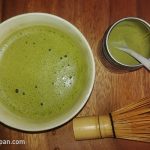
Takeaways
• The halotherapy benefits are vast and varied
• Dry salt inhalation improves your overall respiratory health
• Himalayan salt lamps and bath soaks offer calming and relaxation
• Halotherapy is safe for most people but potential side effects should be taken into account.
Have you ever heard of halotherapy or salt therapy? It's an ancient art that has been used for centuries to relieve various ailments. The idea is simple: by inhaling salty air, breathing in salt particles, or absorbing salt through the skin while soaking, your body can be healed.
This type of therapy has become increasingly popular in recent years as people seek alternative treatments to heal common health issues. Let's take a closer look at this therapeutic practice's history, types, benefits, and side effects.
History
Halotherapy dates back thousands of years ago when it was first practiced to heal respiratory illnesses such as asthma and bronchitis. Throughout history, different cultures have used salt therapy in various ways — from steam baths to dry salt rooms — but it wasn't until modern times that the practice became more widespread. Today, halotherapy is gaining popularity as an alternative treatment for various conditions, including allergies and skin issues.
Types of Salt Therapy
Halotherapy comes in many forms, from dry salt inhalation rooms to Himalayan salt lamps to Himalayan salt bath soaks. The most popular type is dry salt inhalation therapy which involves sitting in a room where fine particles of sodium chloride are dispersed into the air via a special machine called a halogenerator. This allows users to breathe in microscopic particles of highly concentrated natural salts, which can help treat respiratory issues such as asthma and bronchitis.
Other popular forms include Himalayan salt lamps and Himalayan bath soaks which can help detoxify the body by drawing out toxins through the skin or purifying the air around you with negative ions released from the heat generated by the lamp or soak.
Halotherapy Benefits
The benefits of halotherapy are vast and varied depending on what type you use.
Improvement in Overall Respiratory Health
Dry salt inhalation therapy can help reduce inflammation in the lungs while also improving your overall respiratory health by increasing oxygen flow throughout your body.
Calming and relaxation
Himalayan salt lamps can help purify the air around you while also providing a calming atmosphere due to their soft glow, while Himalayan bath soaks can help detoxify your body and promote relaxation after a long day at work or play. Finally, both types can reduce overall stress levels.
Relief in Muscle Tension
Himalayan salt lamps and bath soaks offer relief from muscle tension and aches due to their ability to draw out toxins through your skin or release negative ions into the air around you.
Reduction in Airway Inflammation
Inhalation of microscopic crystal particles helps reduce inflammation in the airways, while mineral-rich air helps improve hydration and detoxification.
Nasal Congestion Relief
A single session of halotherapy can help clear congestion due to allergies or a cold, while regular sessions can help prevent such symptoms from occurring by providing a deep layer of cleansing and rejuvenation.
Toxin Removal
Breathing in micronized salt particles can help activate sweat glands, allowing for better perspiration and skin purification.
Relief for Sinusitis and Asthma
By soothing irritated mucous membranes, regular halotherapy sessions can also provide relief from sinusitis or asthma flare-ups.
Side Effects
Although halotherapy is generally safe for most people, some potential side effects should be taken into account before trying it out for yourself. Some individuals may experience mild irritation, such as coughing or sneezing, due to their sensitivity towards salty air, but this usually goes away shortly after leaving the room or taking off any equipment involved with halotherapy (i.e., masks).
Additionally, those with asthma may find that their symptoms worsen during this type of therapy, so it's best to consult with your doctor before beginning any form of halotherapy if you have this condition or any other serious medical issue such as heart disease or COPD (Chronic Obstructive Pulmonary Disease).
How To Use It
Using halotherapy is relatively simple, depending on what type you choose — consult with your doctor first if you have any pre-existing conditions! Dry salt inhalation requires that you sit in a specially designed room filled with fine particles of sodium chloride; these rooms are typically found at local wellness centers or spas, although they may also be available online if there aren't any near you!
On the other hand, using Himalayan salt lamps requires no special equipment besides purchasing one — simply plug it into an outlet near where you will be sitting/sleeping/working and enjoy its calming glow!
Similarly, using a Himalayan bath soak only requires filling up your tub with warm water and adding several scoops of coarsely ground Himalayan pink crystal salts; once done soaking, make sure not to forget to rinse off afterward!
Conclusion
Halotherapy is an ancient art that has been used for centuries by many cultures worldwide but only recently gained popularity in modern times thanks to its potential benefits, such as reducing lung inflammation and providing relief from muscle tension/aches, among others!
There are different types available depending on what best suits your needs (i.e., dry inhalation rooms; Himilayian lamps; Himilayian bath soaks), although it's important to note that some people may experience mild irritation due to its salty nature, so always consult with your doctor beforehand if needed!
This unique form of therapy offers numerous potential benefits worth trying out if interested – just remember safety first!
You May Also Like







